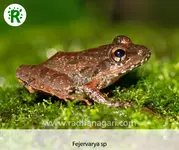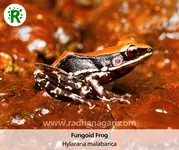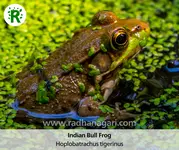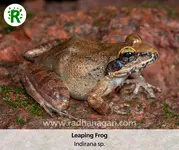Nature of Radhanagari
Amphibians
Amphibians are a class of cold-blooded vertebrates that typically have a complex life cycle involving both aquatic and terrestrial stages. They are characterized by their ability to live both in water and on land, although some species are primarily aquatic or terrestrial. Amphibians include frogs, toads, salamanders, and caecilians.
Here are some key characteristics of amphibians:
Skin Amphibians have thin, permeable skin that allows for gas exchange. Unlike reptiles, their skin is not covered in scales but is smooth or warty. The skin plays an important role in respiration, as oxygen can be absorbed through it.
Life Cycle Most amphibians undergo metamorphosis, starting their lives as aquatic larvae and then transforming into adults adapted for a terrestrial or semi-aquatic lifestyle. For example, frogs begin as tadpoles that breathe through gills and eventually develop legs, lungs, and a fully functioning digestive system.
Moisture Dependence Due to their permeable skin, amphibians rely on moist environments. They are often found near bodies of water, such as ponds, lakes, and streams, where they lay their eggs and breed. Moist habitats are crucial for their survival and reproduction.
Dual Respiration Amphibians can respire through their skin as well as lungs. While larvae typically respire through gills, adult amphibians have lungs for breathing air. Some species can also respire through their skin, which allows them to absorb oxygen from the environment.
Ectothermic Amphibians are ectothermic, which means they rely on external sources of heat to regulate their body temperature. They cannot internally generate heat like mammals or birds and often exhibit behaviors such as basking in the sun to warm themselves.
Amphibians play important ecological roles in their respective habitats. They serve as both predators and prey, contribute to nutrient cycling, and act as indicators of environmental health due to their sensitivity to changes in water quality and habitat degradation.
It's worth noting that amphibians face numerous threats, including habitat loss, pollution, climate change, and diseases such as chytridiomycosis, which has led to population declines and extinctions in some species. Conservation efforts are vital to protect and preserve amphibian diversity worldwide.
















